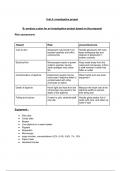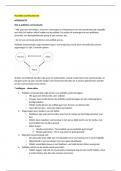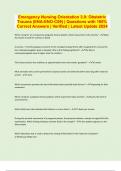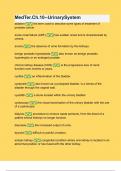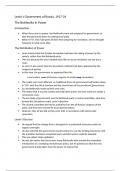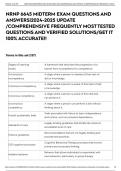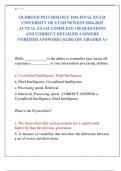Unit 6: investigative project
B: produce a plan for an investigation project based on the proposal
Risk assessment:
Hazard Risk prevention/care
Cuts to skin Glassware may break if not Handle glassware with care,
handled carefully and inflict keep workspace tidy and
cuts/wounds dispose of glassware if
broken correctly
Electrical fire Microscopes require a power Keep water away from the
outlet to operate, having outlet and microscope, inform
water spillages may cause a staff member if water has
fire fallen in outlet
Contamination of daphnia Experiment results may be Wash hands and use clean
inaccurate if daphnia water is equipment
contaminated with other
chemicals or debris
Death of daphnia Harsh light and heat from the Measure the heart rate of the
microscope may result in the daphnia swiftly to prevent
death of the daphnia time being lost
Falling and injuries If water is spilt, students/staff Handle glass beaker full of
may slip water with care, and clean up
water if spilt
Equipment :
● Petri dish
● Cavity slide
● Beaker
● Live daphnia in a water beaker
● Pippiete
● Stopwatch
● Microscope
● sugar solution, concentrations 0.2%, 0.4%, 0.8%, 1%, 10%
● Paper towel
● Handheld tracker
, ● Balance
● Distilled water
● Syringe
Method of making concentrate:
To make the concentration, begin by grabbing 5 beakers and labelling them in order from
water/0% - 0.2% - 0.4% - 0.6% - 0.8% - 1%. Next, Fill the labelled beaker with distilled water.
Next, using a syringe, measure out 1ml of the 10% glucose solution and place it within the
beaker labelled 1%. Finally, using a syringe, measure out 9ml of distilled water from the beaker,
and place it within the beaker labelled 1%.
Now that the 1% concentration of glucose has been made, using a clean syringe, measure out
2ml of glucose from the 1% concentrate, and place it within the beaker labelled 0.2%. Next,
measure out 8ml of water, and place it within the same beaker, and that is the 0.2% concentrate
complete. Following this rule, taking from the 1% concentration, the measurements taken out
should always be the same as the numbers on the beaker. For instance, to make 0.8%
concentration will require 8ml of the 1% solution. Then, subtract the number from 10, and this
will be the amount of water to add to each beaker. For instance, to make 0.8%, it would be
required to subtract 8 from 10, which equals 2, therefore 2ml of water will be added to complete
the concentration of 0.8%.
Method
1. To begin the experiment, all chairs, bags and coats must be placed at the front of the
class to avoid falling or spillages. Next, a pipette is used to transfer the daphnia into a
small beaker, taking caution when extracting the daphnia and transferring it into the
beaker is important to avoid killing them. Roughly 9 or more daphnia should be carefully
placed within the beaker, as this experiment will be repeated 3 times to ensure reliability
2. Then, set up the light microscope and carefully set up the cavity slide, by placing small
pieces of clay on each corner to keep it upright in the petri dish. At this point, a single live
daphnia should be placed with a small droplet of water on the cavity slide. Use the paper
towel to carefully remove some water from the slide to limit movement of the daphnia so
it can be seen clearly through the eyepiece, then secure it onto the stage of the
microscope. After adjusting the light and focus until the daphnia can be clearly seen ( the
heartbeat can be seen on the dorsal side just above the gut and in front of the brood
pouch) leave the daphnia in place for seconds to avoid temperature interfering as an
outside factor too much, however prevention of this is limited.
3. The initial heartbeat should be taken off the daphnia and recorded. To record this, a
stopwatch should be set on a timer of 30 seconds, and the heartbeat can be counted
using the handheld tracker during this duration, then multiplied by 2 to achieve a Beats

